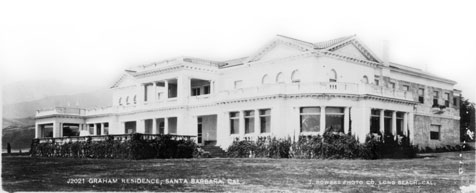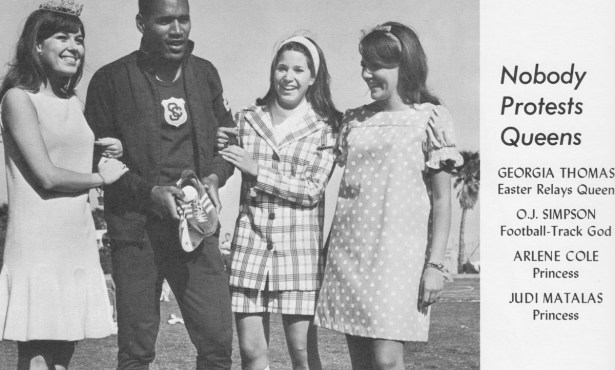Question: ‘Wasn’t there another mansion where the Clark Estate is today?’
-Erma Cook

The palatial home of the William A. Clark family, which sits high on the bluff overlooking East Beach, is indeed not the first building to occupy the site. Before the construction of the Clark mansion, the bluff top was home to the William Miller Graham family, prominent in Santa Barbara high society in the early 1900s.
William Miller Graham made his substantial fortune in mining and oil, particularly his petroleum holdings in Oklahoma. In 1903, he purchased just over 23 ocean-side acres from George Booth in an area popularly called Booth’s Point. (Curiously, there is no “point” there and the origin of the name, beyond the fact that Booth owned the property, remains a mystery.)
Initially, the Graham family lived in the old Booth house while they engaged architect Francis Wilson to design a new home. Among the significant commissions handled by Wilson were the Montecito estate, Las Tejas; the Santa Barbara Club on Chapala Street; and, perhaps his best-known work, the Mission Revival-style Southern Pacific depot in downtown Santa Barbara.
His work for the Grahams was impressive indeed. Reminiscent of an Italian villa, it had a 26-foot-wide veranda commanding views of the ocean and mountains. The entrance hall was 58 feet long, with a floor of white marble. Oak was the wood of choice throughout the home. The house was surrounded by formal gardens that were judged “a marvel of landscaping skill” by one newspaper. By the fall of 1904, the family had settled into their new home, Bellosguardo.
The house actually became a bit of a tourist attraction. Reportedly, tour guides had a tendency to fabricate fanciful stories about the estate to entertain their charges; one of the most popular was that the estate initially was to be a gambling casino on a par with those in Monte Carlo until protests forced the conversion into a private residence.
The Grahams became mainstays of the social scene, known for the fabulous parties thrown at Bellosguardo. One affair featured a psychic, dancers, a juggler, and a trained monkey. Mrs. Graham, through her extensive travels in Europe, developed an interest in theater. In 1913, she and some friends bought land in Montecito as a site for a proposed private theater. The theater, completed in 1914, was designed in part by Francis Wilson and featured three murals by famed artist Albert Herter. Due to financial constraints, the theater did not open until fall 1915. It soon became a popular venue for area playwrights and budding actors to display their talents. Professional companies were also featured, usually in benefit performances. The theater burned down in March 1918, and the cause of the fire was unknown. The theater was covered by a $15,000 insurance policy; unfortunately, damage came to some $40,000 and the theater was never rebuilt.
The Grahams’ marriage was not a particularly happy one, and after 1910, William was rarely seen at Bellosguardo; the couple divorced in 1921. By the mid 1920s, W. M. Graham was also having serious financial problems. His fortune, at one time estimated at more than $20 million, had shrunk to $150. When he filed for bankruptcy in 1925, his debts totaled more than $1.6 million.
Eleanor Graham sold Bellosguardo to William A. Clark in 1923 for $300,000 and, 10 years later, Mrs. Clark had the house torn down to make way for a new home designed by Reginald Johnson, architect of Santa Barbara’s main post office and the Biltmore Hotel. And there the house sits today, with its commanding view of the Pacific.



